Common Denominator Explanation:
When adding or subtracting fractions, it is necessary to have a common denominator. The common denominator is the same number that appears in the denominators of two or more fractions. It allows us to add or subtract fractions easily.
Study Guide for Common Denominator:
Understanding the Denominator:
The denominator is the bottom number in a fraction, representing the total number of equal parts into which a whole is divided.
Finding a Common Denominator:
- Identify the denominators of the fractions you want to add or subtract.
- List the multiples of each denominator.
- Find the least common multiple (LCM) of the denominators, which is the smallest number that is a multiple of all the denominators.
Converting Fractions to a Common Denominator:
- Rewrite each fraction using the common denominator.
- Multiply the numerator and denominator by the same number to keep the value of the fraction unchanged.
Performing Addition or Subtraction:
Once the fractions have a common denominator, you can add or subtract the numerators while keeping the common denominator unchanged.
Simplifying the Result:
If necessary, simplify the resulting fraction by finding the greatest common divisor (GCD) of the numerator and denominator and dividing both by it.
Practice Problems:
Practice finding common denominators for various pairs of fractions and performing addition or subtraction.
◂Math Worksheets and Study Guides Fourth Grade. Measurement
Study Guide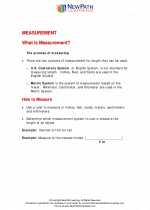 Measurement
Measurement  Activity Lesson
Activity Lesson Comparing Volume Capacities
Comparing Volume Capacities  Activity Lesson
Activity Lesson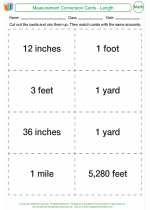 Measurement Conversion Cards
Measurement Conversion Cards  Activity Lesson
Activity Lesson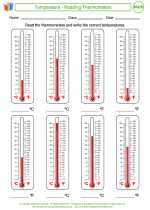 Temperature - Reading Thermometers
Temperature - Reading Thermometers  Worksheet/Answer key
Worksheet/Answer key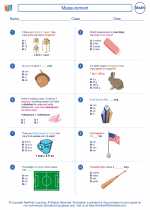 Measurement
Measurement  Worksheet/Answer key
Worksheet/Answer key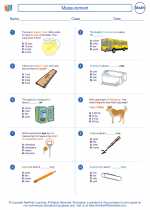 Measurement
Measurement  Worksheet/Answer key
Worksheet/Answer key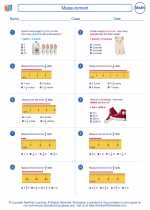 Measurement
Measurement  Worksheet/Answer key
Worksheet/Answer key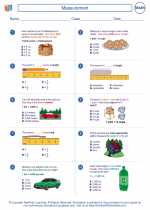 Measurement
Measurement  Worksheet/Answer key
Worksheet/Answer key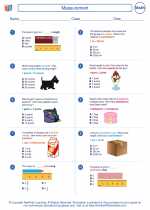 Measurement
Measurement  Worksheet/Answer key
Worksheet/Answer key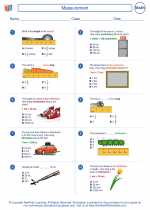 Measurement
Measurement  Worksheet/Answer key
Worksheet/Answer key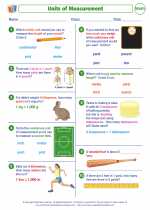 Units of Measurement
Units of Measurement  Worksheet/Answer key
Worksheet/Answer key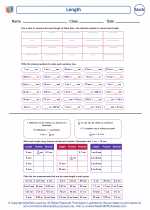 Length
Length  Worksheet/Answer key
Worksheet/Answer key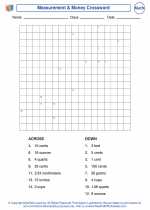 Measurement & Money Crossword
Measurement & Money Crossword  Worksheet/Answer key
Worksheet/Answer key Measurement Conversions
Measurement Conversions  Vocabulary/Answer key
Vocabulary/Answer key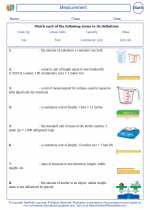 Measurement
Measurement  Vocabulary/Answer key
Vocabulary/Answer key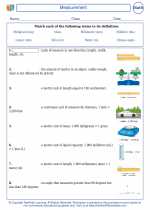 Measurement
Measurement  Vocabulary/Answer key
Vocabulary/Answer key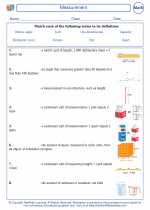 Measurement
Measurement 

 Activity Lesson
Activity Lesson
 Activity Lesson
Activity Lesson
 Activity Lesson
Activity Lesson
 Worksheet/Answer key
Worksheet/Answer key
 Worksheet/Answer key
Worksheet/Answer key
 Worksheet/Answer key
Worksheet/Answer key
 Worksheet/Answer key
Worksheet/Answer key
 Worksheet/Answer key
Worksheet/Answer key
 Worksheet/Answer key
Worksheet/Answer key
 Worksheet/Answer key
Worksheet/Answer key
 Worksheet/Answer key
Worksheet/Answer key
 Worksheet/Answer key
Worksheet/Answer key
 Worksheet/Answer key
Worksheet/Answer key
 Vocabulary/Answer key
Vocabulary/Answer key
 Vocabulary/Answer key
Vocabulary/Answer key
 Vocabulary/Answer key
Vocabulary/Answer key

The resources above cover the following skills:
Measurement (NCTM)
Understand measurable attributes of objects and the units, systems, and processes of measurement.
Understand such attributes as length, area, weight, volume, and size of angle and select the appropriate type of unit for measuring each attribute.
Understand the need for measuring with standard units and become familiar with standard units in the customary and metric systems.
Understand that measurements are approximations and how differences in units affect precision.
Apply appropriate techniques, tools, and formulas to determine measurements.
Select and apply appropriate standard units and tools to measure length, area, volume, weight, time, temperature, and the size of angles.